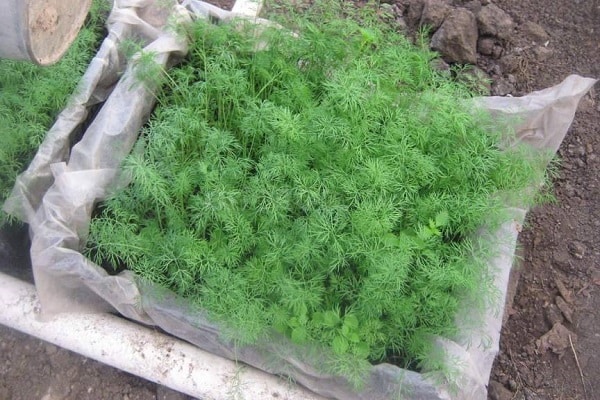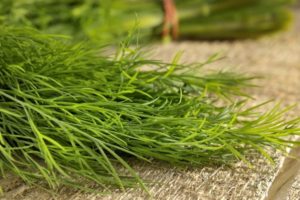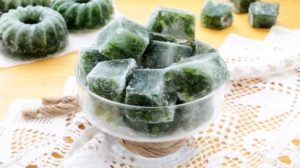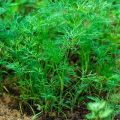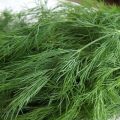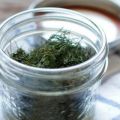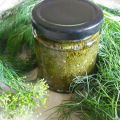Description of the dill variety Salute, recommendations for growing and care
Dill Salute, which belongs to annual herbs, was bred in the nineties of the last century by Russian breeders. Due to its pleasant smell, the leaves and seeds of the umbrella plant were used as a seasoning even in Ancient Egypt and Rome. Decoctions of fragrant herbs eliminated diarrhea, treated neuroses, eczema, eye and women's diseases. Dill water is now given to babies to drink with bloating.
Salute is one of the best representatives of the family, adapted for growing in fields, small plots, indoors.
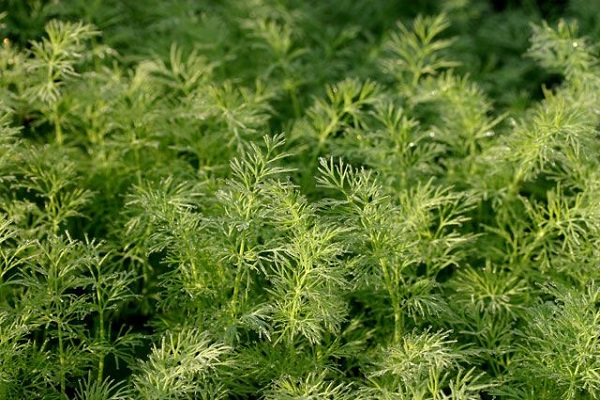
Description of the variety
During the growing season of Salute dill, a powerful bush is formed with thick feathery leaves of a dark green color, covered with a purine bloom. They are arranged vertically, in one outlet there are up to 30 pieces. The length of the petiole grows up to 16 cm, the height of the stem, which has longitudinal stripes, reaches 1 meter.
About 200 g of juicy greens with a pleasant smell are cut from one bush. At the end of the growing season, a rosette is formed, where seeds ripen, which are characterized by:
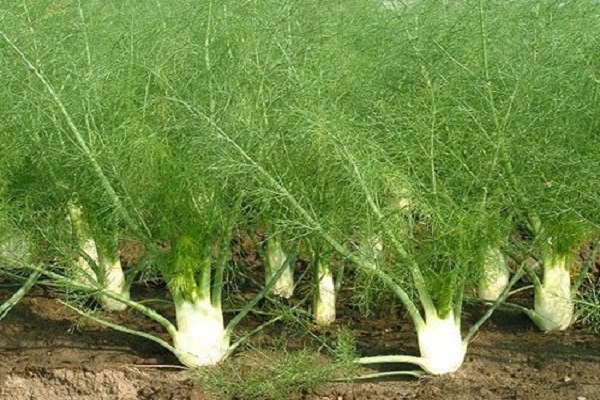
- rounded shape;
- light brown;
- insignificant thickness.
On the greens, the leaves of the late-ripening Salute are cut off, 45 days after that, shoots will break through from the ground. In unfavorable weather, dill ripens later. Up to 4.8 kg of aromatic herbs are harvested from a square meter of a plot in several steps.
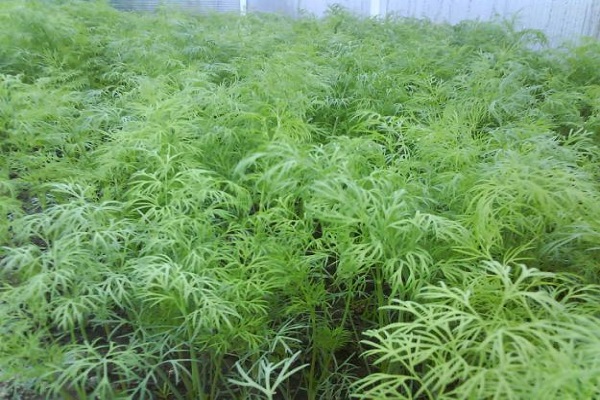
Growing
Salute gives a decent harvest both in greenhouses and in summer cottages. The variety thrives on light and fertile lands, does not tolerate acidic soil. Grow a green crop where there is a lot of sun, it will not grow in the shade.
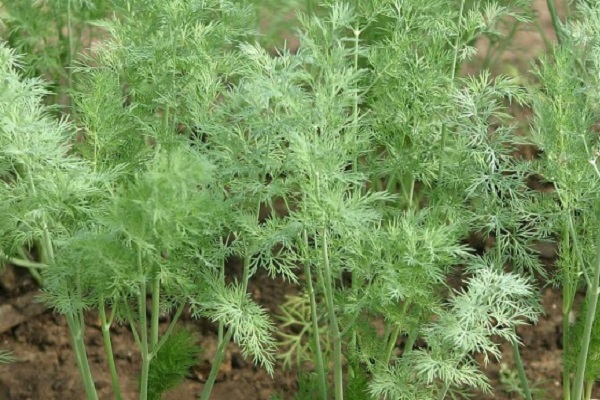
Sowing dates
It is easy to collect material for planting from self-pollinated dill Salute. From one bush, up to 8 g of flattened grains with a pronounced smell are obtained, which sprout together only in the first year. For a late-ripening variety, 2 sowing dates are used - May or the last days of August, all September. Dill sproutwhen the air temperature rises above 8 degrees. Greens are cut in June, umbrellas - at the end of summer.
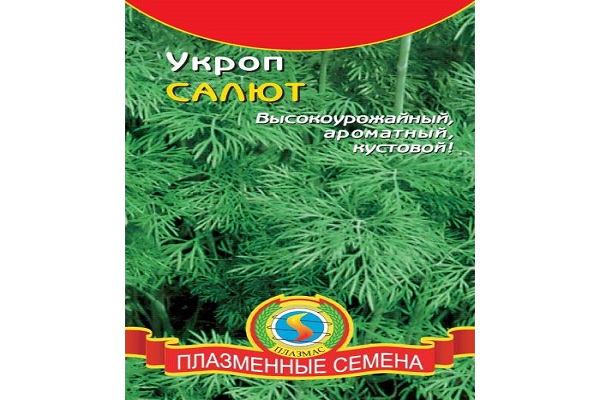
Soil preparation
For a spicy culture to please with a harvest, you need fertile land. The plant responds well to organic matter. It is not necessary to add lime or ash to the soil chosen for planting Salute, otherwise the leaves will turn red.
Before sowing, the soil is fed.

- mullein (liter per bucket of water);
- liquid fertilizer Biud;
- a mixture of humus with the preparation Solution and nitrofoskoy;
- Kemir's universal remedy.
It is enough to select one of these organic substances, and not to use all of them at the same time.A dill bed is dug where the sun's rays fall all day, the fragrant grass does not take root in the shade.
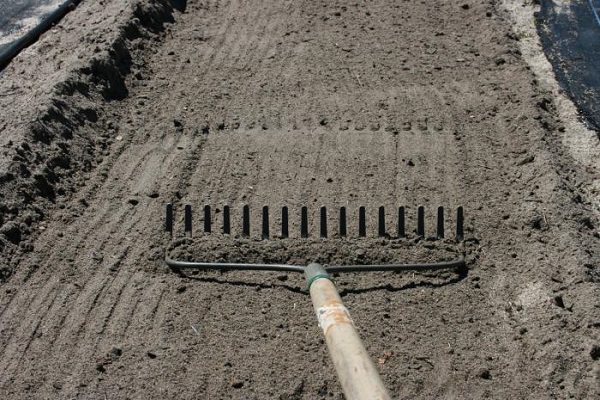
Seed preparation
Salute like others dill varieties, does not grow well, since essential oils are present in the flattened grains. The problem can be solved not in one way, but in several ways:
- The seeds are washed in warm water, left for a day to swell.
- Soaked for 4 hours, then dipped into a container with potassium permanganate solution.
- Soaked in ash infusion for 2 days.
- After warming up and disinfection, they are treated with a growth stimulator.
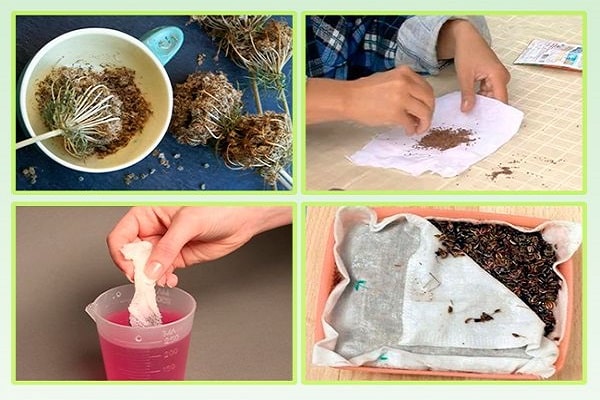
Disinfection of seed in water with a temperature of 50 degrees helps to improve the germination of grass. After the procedure, the duration of which should not exceed 15 minutes, the grains are transferred into a solution prepared from an Immunocytophyte tablet.
Sowing
Dill of the Salute variety is planted in the ground in a continuous way, the embedding depth should not exceed 2 mm. For one running meter of the plot, about 30 seeds are used, which are placed in a wide furrow, the distance between each is up to 12 cm. Soil is poured on top.
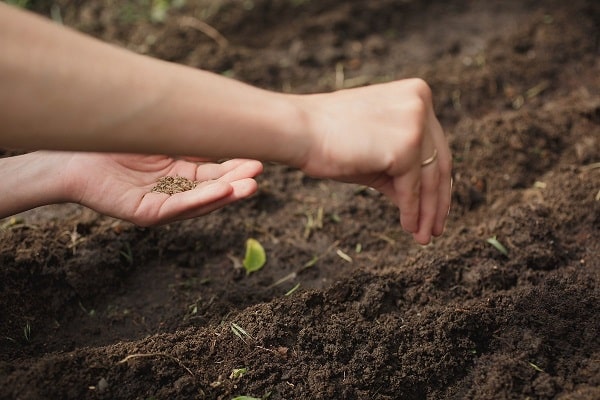
Care features
Although a spicy crop is an unpretentious plant, this does not mean that no work is required after sowing. To harvest an excellent harvest of greenery, it is necessary to fight weeds, loosen the soil, and water.
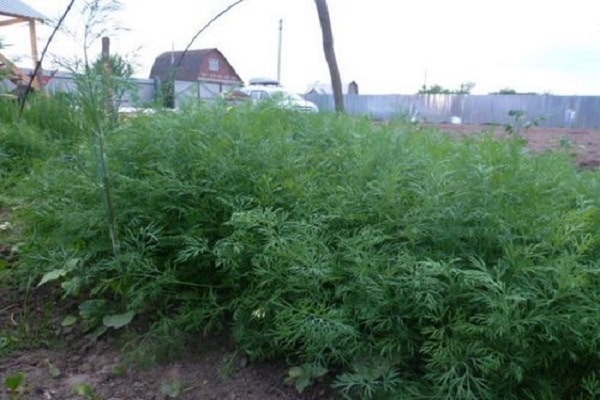
Weeding
Air does not enter well into dense soil, moisture stagnates, and dill receives an insufficient amount of nutrients and develops slowly. In order for the greens to grow well, after each rain or irrigation, the soil must be loosened.
Weeds drown out cultivated plants; they must be pulled out by the root several times per season.
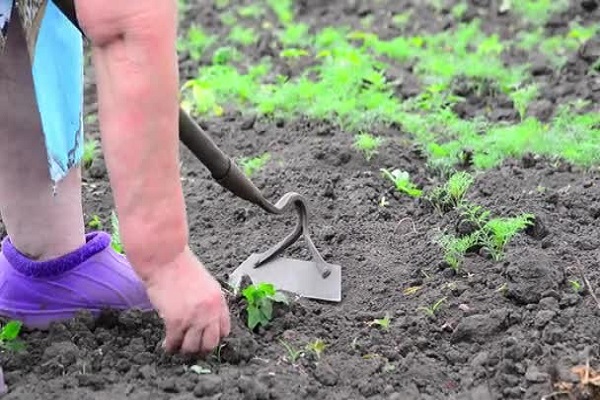
Watering
When the soil dries out, which happens in extreme heat, the dill leaves begin to wither, the growth of bushes stops. It is necessary to ensure that there is enough moisture in the soil, however, you cannot water the plant much, otherwise the taste and smell of dill deteriorates.
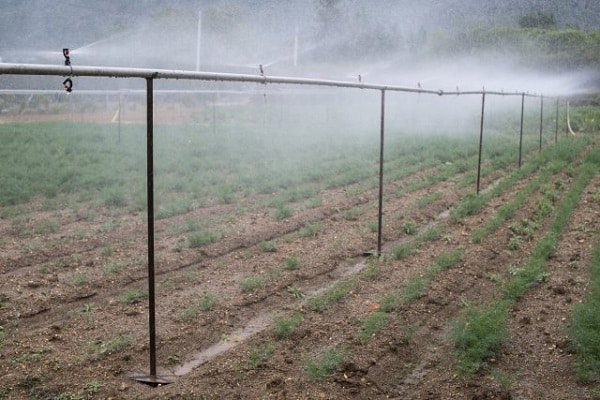
Top dressing
The land is fertilized only before sowing, you should not do this during the Salut vegetation. It is not recommended to spray the leaves with fungicides as they are used for cooking throughout the summer. If dill grows slowly, it is fed with carbamide and nitrophosphate.

Advantages disadvantages
The Salyut variety is liked by summer residents and gardeners because it gives a good harvest, the leaves grow quickly after cutting, and umbrellas are formed only by the end of summer. The advantages of the variety include:
- excellent taste and aroma;
- disease resistance;
- the possibility of long-term use of greenery.
Spicy grass normally tolerates small frosts, sharp weather fluctuations. Thanks to these features, the variety quickly became popular with gardeners.

Pests and diseases
With dense plantings and high humidity in closed ground, the roots of dill rot, the leaves wither. The grass is affected by the black leg, fungal spores, bacteria.
When growing a crop in a garden bed, blind men and Italian bugs attack. Insects and larvae, adore dill, suck the juice out of it. The Salute variety suffers from wireworm, coriander seed-eater, aphids.
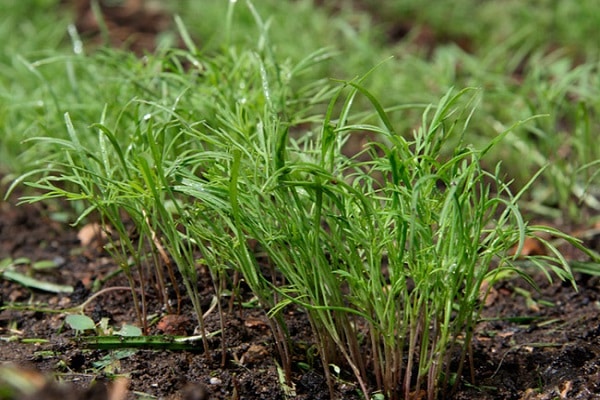
Greens are not treated with fungicides. Insects are collected by hand, folk remedies are used. Observance of crop rotation helps to avoid the appearance of pests.
Collection and storage of dill
Spicy grass is cut for greens starting in June, when the stem grows to 12 cm in height. Both leaves and seeds are put in salads, in soups, in fish and meat dishes.
For long-term storage, greens are dried, salted, canned. When fermenting cabbage, preparing a marinade for tomatoes, cucumbers, peppers, inflorescences are used along with the stems.
